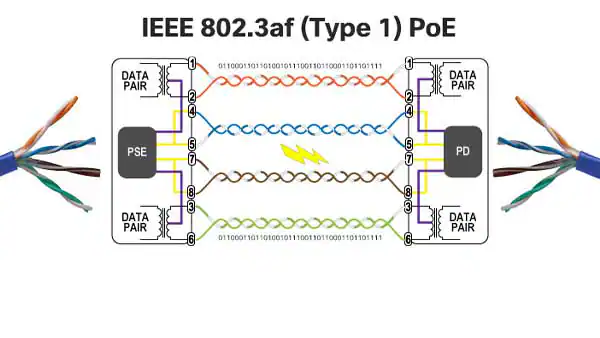Power over Ethernet (PoE) is a technology that allows network cables to carry electrical power. This means that a single cable can provide both data connection and electrical power to devices such as wireless access points, IP cameras, and VoIP phones. The voltage supplied through these cables is referred to as PoE Ethernet voltage.
What is the PoE Ethernet Voltage?
PoE Ethernet voltage is the electrical potential difference supplied through Ethernet cables to power network devices. Instead of needing separate power supplies, devices connected via Ethernet cables receive both data and power, simplifying installation and reducing the number of cables needed.
PoE Voltage Range
The voltage supplied in PoE can vary depending on the type of PoE technology used. There are several standards, each with its own voltage range:
- IEEE 802.3af (PoE): This standard provides a voltage range of 44 to 57 volts, typically around 48 volts.
- IEEE 802.3at (PoE+): This standard supplies between 50 to 57 volts.
- IEEE 802.3bt (PoE++): This latest standard can supply between 50 to 57 volts, with higher power levels available compared to the earlier standards.
What is the PoE Maximum Voltage?
The maximum voltage for PoE, according to the IEEE 802.3bt (PoE++) standard, is 57 volts. This standard allows for higher power delivery, supporting more power-hungry devices such as advanced network cameras, LED lighting, and other high-powered devices.
What is the PoE Standard Voltage?
The PoE standard voltage commonly used is 48 volts. This is a midpoint value that balances efficiency and safety, making it suitable for most devices powered via PoE. The 48-volt standard is consistent across the IEEE 802.3af and 802.3at standards, making it a reliable and widely accepted voltage for PoE applications.
PoE Ethernet voltage is a crucial aspect of the Power over Ethernet technology, enabling the delivery of both data and power through a single cable. Understanding the voltage ranges and standards helps ensure the compatibility and safety of network devices.
Read also:
















